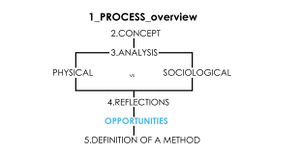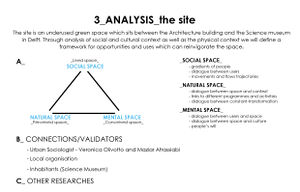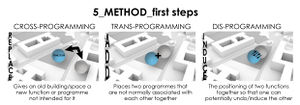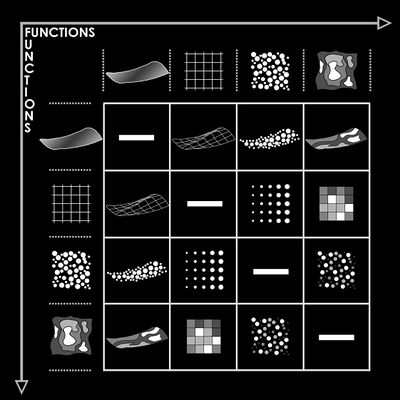atom10:CONCEPT-CHALLENGE
Contents |
Analysis
- Process
aaaaaaaaa aaaaaaaaaaaaaaaa aaaaaaa aaaaaaa aaaaaaa aaaaaaaa aaaaaaaaaaaaaaaaa aaaaaaaaaaaa
Aaaaaaaaaaaaaaa aaaaaaaaaaaaaaaaaaaaaa aaaaaa aaaaaaaaaaaaaaa aaaaaa aaaaaaaaaaaaaaaaaaaa aaaaaaaaaaaaaaa aaaaaaaaaa aaaaaaaaaaaaaaaaaaaaaa
- Method
Aaaaaaaaaaaaaaaaaaaa aaaaaaaaaaaaaaaaaaa aaaaaaaaaaaa aaaaaaaaaa aaaaa aaaaa aaaaaaa aaaaaaaaaaaa aaaaaaaaaaaaaa aaaaaaaaaaaaaaa
Aaaaaaaaaaaaa aaaaaaaaaaaaaaaaa aaaaaaaa aaaaaaa aaaaaaaaa aaaaaaaaaaaaa aaaaaaaaaaaaaa aaaaaaaaaaaaaaaaaaaaaaaaaaaaaaaa
- Imagined activities
Aaaaaaa aaaaaaaaaaaaaa aaaaaaaaaaaa aaaaaaaaaaaaaaa aaaaaaa aaaaaa aaaaaa aaaaaaaaaa aaaaaaaaaaaa aaaaaaaaaa aaaaaaaaaa
Aaaaaaa aaaaaaaaaaaaaaaaa aaaaaa aaaaaaa aaaaaaaaaa aaaaaaaaaaa aaaaaaaaaaaaaaaa aaaaaaaaaaaaaaa aaaaaaaaaaaaaaaaaaaaaaa
Cross/trans/dis-programme
“Architecture is a combination of Space, Events and Movement without any hierarchy” (Bernard Tschumi)
_The concepts of cross/trans/dis-programming will allow for a flow of dialogue by emphasizing transformation, adaptation and movement in design. _Trans-programming can produce a path for urban interchange. The unexpected interaction resulting from this is the challenge. _Dialogue between form and function results in spaces of urban interchange. In this way the flow of dialogue is not only increased between the different users of the space/building, but also between the users and the space/building/urban sourranding.
Now we want to create a description of our purposed/imaginery activities, exploring how they would use the site and what sort of structure they requires. At the same time we want to develop a matrix or diagram representing the different possible uses of space.
Work in progress
Define the intervention
We have identified three methods we would like to use to define the intervention; Site analysis - based on density, Rhythm analysis - measuring the flow of movement, information, money and social activity, and Imagined use analysis - creating a matrix of characteristics for different activities. Optimisation will occur between the conflicting uses, existing rhythm and its disruption, and the constraints of density within the site.
Within the rhythmanalysis and the imagined use analysis a range of themes will be developed which will allow the two forms of analysis to engage and inform each other, for example; educational, cultural and leisure.
- Rhythm analysis
aaaaaaaaa aaaaaaaaaaaaaaaa aaaaaaa aaaaaaa aaaaaaa aaaaaaaa aaaaaaaaaaaaaaaaa aaaaaaaaaaaa
Aaaaaaaaaaaaaaa aaaaaaaaaaaaaaaaaaaaaa aaaaaa aaaaaaaaaaaaaaa aaaaaa aaaaaaaaaaaaaaaaaaaa aaaaaaaaaaaaaaa aaaaaaaaaa aaaaaaaaaaaaaaaaaaaaaa
Read more about rhythm analysis
- Imagined use analysis [matrix]
Aaaaaaaaaaaaaaaaaaaa aaaaaaaaaaaaaaaaaaa aaaaaaaaaaaa aaaaaaaaaa aaaaa aaaaa aaaaaaa aaaaaaaaaaaa aaaaaaaaaaaaaa aaaaaaaaaaaaaaa
Aaaaaaaaaaaaa aaaaaaaaaaaaaaaaa aaaaaaaa aaaaaaa aaaaaaaaa aaaaaaaaaaaaa aaaaaaaaaaaaaa aaaaaaaaaaaaaaaaaaaaaaaaaaaaaaaa
Validators
We have spoken to Heleen Bothof and Maziar Afrassiabi to gain a greater insight into the context of the site and what might be required in the future.
They are not acting as clients but as collaborators, giving us new perspectives and contextual information.
- Meeting: Heleen Bothof, Luz architects
There is currently a proposal for 5,000 new homes within the TU Delft campus. A requirement of being granted permission to build these new houses is considering the impact on the local infrastructure. Heleen Bothof is currently developing solutions for the increased amount of green and water space needed. In order to stop flooding, more water capacity needs to be added to the area, this is done through widening canals, making new ones and connecting the waterways together in order to improve the robustness of the system. Green space will be increased by converting car parks and unused spaces. Roof top gardens could also be introduced.
With the Dutch population forecast to grow it seems logical that the pressure to build houses will increase. Our intervention will use this scenario to define the site. Our intervention can also begin to implement and introduce the future scenario.
We are now arranging through Heleen to meet ecologists and local inhabitants to discuss the possibilities for the site.
3 main actors around the site: Housing corporation (DUWO), TU Delft and local inhabitants. Each group have their own vision and preference with how the space should be developed.
- Meeting: Maziar Afrassiabi, Urban Sociologist
We discussed ways of gathering and representing data. The municipality provide information regarding demographics which can be used to show a comparison between the surrounding context and other areas. He also suggested looking at Lefebvre’s book Rhythmanalysi
We will study a range of rhythms around the site; physical movement, knowledge transfer and social and economic flows. This will give the site a context which can be used to define where and how our intervention will form and what activities it should encourage.
- Websites consulted
www.statline.cbs.nl
www.delft.buurtmonitor.nl/
Back to Home



